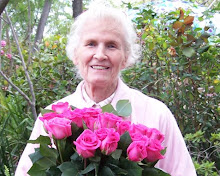Thursday, September 25, 2008
'Night Court' star's former Fullerton home declared landmark
Orange County Supervisor Chris Norby also used to live in the 1919 Craftsman house.
By BARBARA GIASONE
The Orange County Register
FULLERTON
A 1919 Craftsman home – where actor Harry Anderson performed magic, Orange County Supervisor Chris Norby led Halloween Haunts and inventor Otto Heinz built the first motor car with a supercharged engine – earned Local Landmark status from the Fullerton Landmarks Commission on Wednesday.
The 2,456-square-foot residence at 1021 N. Lemon St. is one of approximately 80 homes in the city to qualify for the designation, Fullerton Heritage secretary Bob Linnell said Thursday. Another 150 houses have been recognized as potential landmark homes.
The current owners, Harry and Debora Langenbacher, who purchased the single-family structure in 2000, applied for the designation based on the history of the previous property owners and their contributions to the city.
With the landmark status, any changes to the structure would have to be approved by the city's design review committee and, ultimately, by the Planning Commission acting as the Landmarks Commission.
"When our family moved in, Lemon Street was called Harvard Street," Norby recalled. "My mother rented the guest house to a lot of people, including (actor) Harry Anderson, who attended Fullerton College."
Norby said the magician-turned-actor often went around the corner to Hillcrest Avenue to teach magic tricks to Claude Yarborough, who is now known as international celebrity magician, Jonathan Pendragon. Anderson is now best known for his starring roles on the television shows "Night Court" and "Dave's World."
"Harry was my mentor, and we'd do magic tricks over at the Norby's," Pendragon said Thursday. "Mr. and Mrs. Norby were like the extended parents in the neighborhood, and we kids would often sit and play 20 games of chess a day at their house."
Pendragon has since performed his magic act in 50 countries, and appears on international television shows.
Automobile inventor Otto Heinz occupied the home in 1925. He had plans to build 1,000 supercharged sedans and sports cars to retail for $2,900 each, but only produced two Balboa Motor vehicles. His corporation folded amid stock promotion and fraud charges.
Norby said his home was always a gathering place for children in the neighborhood and a "coterie of entertainment."
"Dad paid $25,000 for the property in 1959," Norby said. "I think he always wished he would have kept it instead of moving to Los Olivos where he opened an art gallery."
Before the lot was subdivided in 1979, the northwest corner of the property was a virtual forest, Norby said.
His brother, Eric, recalled a tree house and a clubhouse for the neighbor children.
Chris Norby said he and his three siblings would play in the basement and several attics where he found World War I German helmets left by the previous owners.
Research conducted by Fullerton Heritage revealed a variety of homeowners who lived in the 1919 Craftsman bungalow-style house that earned Local Landmark status Wednesday at the Fullerton Planning Commission meeting.
Among the owners were:
•H. Harwood Tracey, 1919-1922: Tracey bought the vacant lot from the Fullers in 1919 to construct a house and detached garage. He was a science instructor at Fullerton Union High School and Fullerton College for more than 30 years. He also built a school cabin in the San Bernardino Mountains that served as a study headquarters until 1938 for students learning about plants and animals.
•Emerson J. Marks, 1924: He was the city attorney for Fullerton, Brea, La Habra and Placentia. He was also appointed to the bench of the Superior Court in Santa Ana in 1925, and was a member of the Fullerton Board of Trade in the city's formative years.
•Otto W. Heinz, 1925: Heinz was president of the Balboa Motor Corporation, which built a manufacturing and assembly plant in Fullerton to produce the first motor car that featured a supercharged engine similar to those used in race cars and airplanes. He planned to build 1,000 sedans and sports cars, which would retail for $2,900 each. The plant only produced two cars before the corporation folded amid stock promotion and fraud charges.
•John Gardiner, 1926-1933: The son of an early Fullerton rancher, Gardiner started an insurance and real estate loan business. He was elected to Fullerton City Council in 1904, working alongside the town founders, the Amerige brothers and Charles Chapman.
•Cornell Norby, 1959-1984: The father of Orange County Supervisor Chris Norby was a builder and art collector, who opened the Norby Western Art Gallery in downtown Fullerton in 1980. The Norbys rented a guest house to actor Harry Anderson, best known for his roles in television's "Night Court" and "Dave's World."
http://www.ocregister.com/articles/fullerton-norby-city-2169940-house-harryThere was a nice picture of the home in the newspaper, but I couldn't find it online.
Does anyone have any personal stories about this house?





